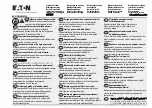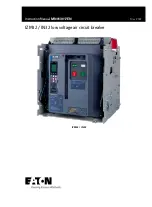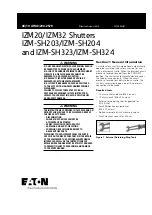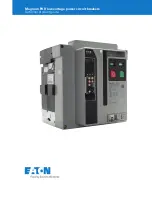
CB Watch 3 User Manual
v6.3 - May 2019
Page 32 of 100
Temperature compensation
The temperature compensation uses the ambient temperature value and a
compensation table that can be customised for that CB type during setup.
It requires the presence of an outside ambient temperature value, either from a
dedicated temperature sensor or from the gas sensor(s).
The temperature compensation is computed by shifting the timing alarm thresholds
based on the change induced by the recorded ambient temperature when the operation
took place compared to nominal 20
o
C. The change is extrapolated from the table.
Example below: the time threshold was entered for an ambient temperature of 20
o
C. At
lower temperatures, extra time needs to be allowed so the compensating time should be
0ms for 20
o
C and +3ms at -25
o
C in the first example.
Figure 44
–
Two examples of operating time temperature compensation values
Voltage compensation
The control line voltage compensation depends on the actual DC voltage being supplied
to the coil when the command is sent compared to the nominal DC voltage.
It requires the presence of the DC voltage measurement sensor to provide the measured
DC voltage information required.
The coil voltage compensation is computed by shifting the alarm thresholds based on
the percentage change (up or down) of the coil voltage measured when the operation
took place compared to the nominal voltage.
Example below: the time threshold was entered for a nominal DC voltage of 125V, at
lower voltage extra time needs to be allowed so the compensating time should be 0ms
for 0% and an increasing positive value of 6 milliseconds for a voltage of 90V DC (72% of
nominal). Conversely, an increasing negative value is used as the voltage gets higher.
Figure 45
–
Example of closing operating time changes with voltage changes







































